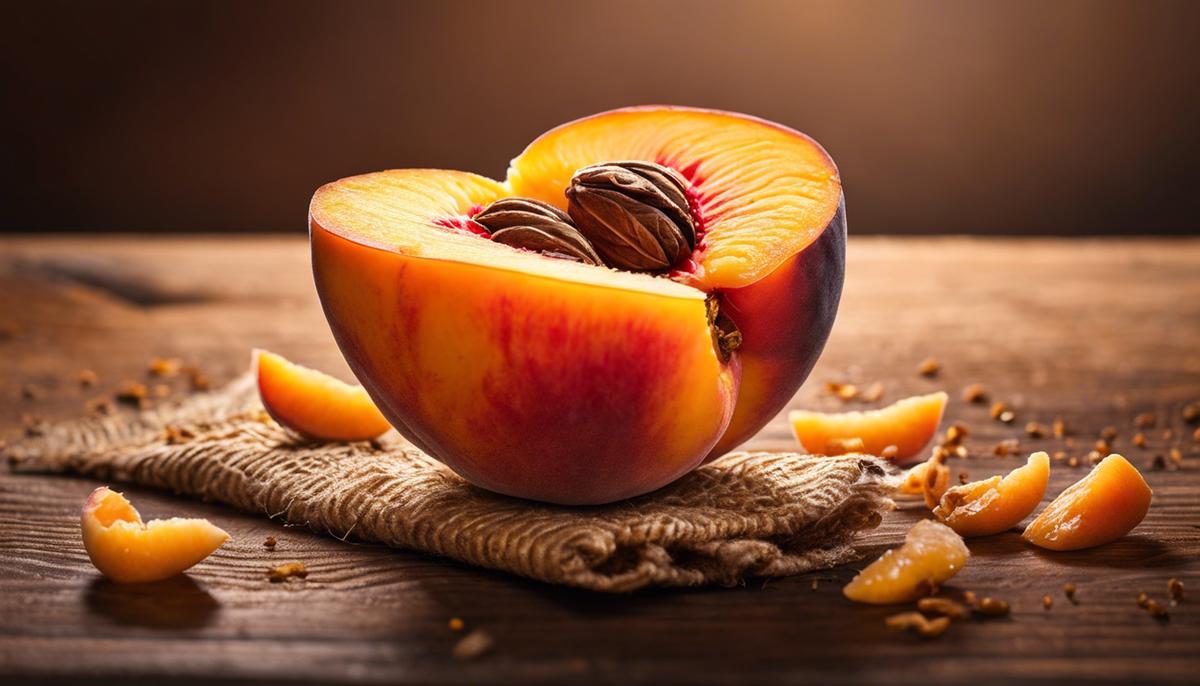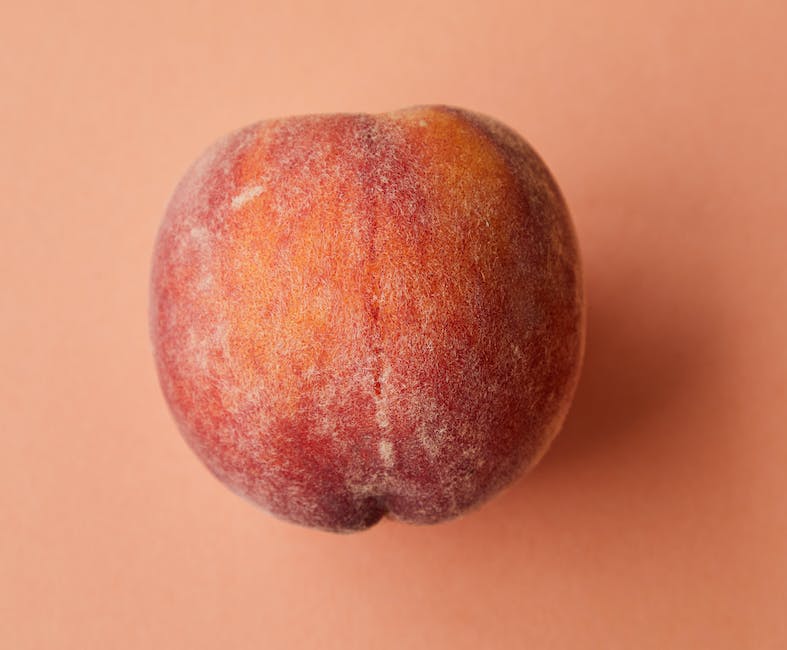Grow a Peach Tree From a Pit: A Guide

There is something truly rewarding about watching a tree you’ve planted from seed grow and prosper. This is especially true for the peach tree, a beautiful tree that produces sweet and succulent fruits. But how do you start? This essay offers comprehensive guidance on growing a peach tree from its pit, the seed found in the fruit’s center. The process begins with the humble peach pit and moves through elaborate stages leading up to a flourishing tree. It addresses three main areas: pit preparation, planting the pit, and peach tree care, each offering its share of adventure and learning.
Peach pit preparation
The Art of Cultivating from Peach Pits- A Detailed Guide
The soulful journey of gardening can lead everyone down a unique path. And for many, it’s all about those succulent, juicy peaches. Imagine biting into a fresh, homegrown peach that originated from a pit you carefully cultivated. Amazing, isn’t it? With the right knowledge and a dose of enthusiasm, anyone can unlock the beautiful process of transforming a simple peach pit into a thriving tree. Here’s your guide to properly prepare a peach pit for planting.
Begin with the finest quality peaches, ideally from a local farmer’s market or a trusted orchard. The better quality the peach, the healthier the seed within!
Once you’ve savored the luscious fruit, the next step is cleaning the pit. Rinse the pit thoroughly under running water. Be meticulous, leaving no trace of fruit flesh. Remember, horticultural success lies in the details!
After it’s clean, pat dry the pit with a towel and it’s ready for the ‘Cracking’ stage. Peach pits are hard shells protecting soft seeds inside. While certain gardening school of thoughts recommend planting the pit directly, cracking open the pit tends to offer more consistent results.
The cracking process requires precision. Place the pit in a vice, horizontally, and tighten slowly. Listen closely for a slight crack. Once you hear it, you can easily pry the pit open with a pocket knife or any sturdy, thin tool. Exercise utmost care while doing this. Underneath the hard shell is the actual seed that will sprout into a peach tree.
Once the pit is cracked open, remove the almond-like seed inside. It’s delicate, treat it gently. Now comes the stage of ‘Stratification’, mimicking the winter cycle that the seeds experience in nature.
Stratification involves keeping the seed in cold and moist conditions for a period. Wrap the seed in a damp paper towel, then place it inside a zip lock bag. Leave a small opening in the bag for air circulation.
Then, it’s time for the refrigerator sojourn! Place the bag in a refrigerator set at around 34-40 degrees Fahrenheit. It needs to be checked weekly to assure the towel remains damp but not overly wet.
After about 10 weeks, you might notice a small root emerging from the seed. Success! Once this root shows, your peach seed is ready to be planted.
Choosing the right soil is next in line. Peach trees prefer well-drained, loamy or sandy soil with a pH level between 6 and 7.
Plant the seed in a small pot indoors or in a sheltered outdoor area around the late spring. Keep the root down, barely covering the top of the seed with soil. Water it well and keep the soil moist but not waterlogged.
Ensure the young plant gets ample sunlight. With proper care, patience, and love, the seed will sprout into a sturdy peach sapling, ready to bear sweet, juicy fruits in years to come.
Embrace the process and the journey it takes you on. Nurturing a peach pit into a bountiful tree might be time-consuming, but it’s a wholesome, gratifying experience. The first bite of your homegrown peach will undoubtedly be worth the wait and effort. Happy Gardening!

Planting the pit
Getting Your Peach Pit Ready to Hit the Soil: The When and How
So the seed in your cracked peach pit is shining with promise and ready to be sown. Brace yourself, the miracle of life is just about to unfurl in your hands! Now, remember, timing is everything, and knowing when to plant your prepared peach pit is just as important as knowing how.
Spring is generally the best time to plant your prepared peach pit, specifically when the threat of frost has passed. Mother Nature, in her infinite wisdom, has conditioned peach seeds to sprout when soil temperature is between 55-60 degrees Fahrenheit. So get your soil thermometer ready and wait for the warmth!
How you plant your peach pit is equally crucial. Prepare a hole in your chosen garden spot that’s about twice as wide and deep as your seed. Position your peach seed in the center of this hole, and remember to align it with its pointy edge facing up, around 3 inches below the soil surface. Next, fill the hole with a mixture of the original soil and compost, which enhances the nutrient content for the seed to grow.
Once planted, form a mound over the spot to facilitate efficient water runoff, saving your precious seed from unnecessary water-logging. Then, water the mound thoroughly, and maintain a regular watering schedule thereafter. The soil should feel moist but never soggy. Overwatering is a surefire way to kill your burgeoning tree, so remember, moderation is the key!
Transplanting your young plant to a larger container or ground may become essential when it outgrows its pot. So always stay vigilant for indications of root bounding and respond accordingly. Choosing an appropriately sunny location, with a minimum of six hours of sunlight, is also vital to ensure abundant, juicy peaches in the future.
Mulching is another peach tree care essential to keep the soil moisture and temperature steady. Organic mulch, like shredded bark or leaves, also improves soil structure and nutrients levels, launching your peach tree into a flourishing growth spurt!
Remember, growing a peach tree from a pit is an act of patience, but it is also one that weaves a tale of transformation and growth that is enormously satisfying. So let’s get those hands dirty, shall we? Your homegrown juicy peaches are just a season or two away. Happy planting, folks!

Peach tree care
Continuing our journey with the sapling, patience and commitment are key ingredients for escalating the sapling to a young peach tree. Developing the peach tree to a point that it yields fruit requires further expert nurturing and care.
The location is crucial. Gradually, as the sapling grows stronger, it’s essential to provide it with ample space outdoors with access to lots of sunshine for at least six hours a day. The sapling will need to be exposed to chill hours (below 45 degrees Fahrenheit) during dormancy. Hence, choosing a spot for the tree that provides the requisite weather conditions is paramount.
When your sapling becomes robust, ‘transplanting’ commences. Creating a well-spaced hole (about twice as wide as the tree’s root ball) is the first task. Position your young peach tree gently in the center, leaving the bud union (where it was grafted) about an inch above soil level.
The sensation of soil temperature on the roots triggers the peach tree’s growth. Ensure the soil maintains a temperature between 55-60 degrees Fahrenheit in the spring for best results.
The ‘watering’ technique requires a keen eye – the soil should be kept moist, but not soggy. Water the trees profoundly once every week or two, depending on the rainfall. Regular checks to avoid waterlogged soil are necessary for preventing root diseases. Consider this a balancing act, ensuring optimum moisture is crucial yet overwatering is a potential misstep.
Mixing compost into the soil during the planting can provide a nutrient-rich environment. A routine application of fertilizer in late winter or early spring further encourages growth.
Appropriate ‘mulching’ reaps extraordinary rewards. Spreading organic mulch around your peach tree, keeping it a few inches away from the trunk, can help maintain soil moisture, regulate soil temperature and improve soil structure. Quality compost or well-rotted manure is ideal for mulching and improves the nutrient level of the soil, which in turn enhances the health and productivity of your peach tree.
Training and pruning your peach tree should not be underestimated. This can stimulate growth, maintain the shape, balance, and light penetration that contributes to a more fruitful yield. Late winter or early spring are suitable times for significant pruning measures, while regular trimming can be done throughout the year.
Pest control is another stride towards healthy peach production. Keeping a vigilant eye for common fruit tree pests like aphids, peach tree borers, and mites can spare your peach tree discomfort and disease.
The joy of growing and nurturing a peach tree is bountiful, much like its fruit. It’s a labor of love, which, when performed with dedication and enthusiasm, promises a rewarding outcome of abundant, succulent peaches, a joy to behold and share. Your vibrant peach tree is not just a gardening hobby but an embodiment of your perseverance and passion for nature.

While it may seem like a daunting task, taking the journey from a simple peach pit to a fruit-bearing tree is a truly transformative experience. Utilizing techniques such as stratification to prepare the pit, understanding the intricacies of proper planting, and mastering the art of tree care is achievable with patience and determination. The knowledge you gain, combined with the satisfaction of watching your peach tree flourish is immeasurable. Embrace this golden opportunity to deepen your gardening skills, while waiting for your first harvest of delectable, home-grown peaches.



